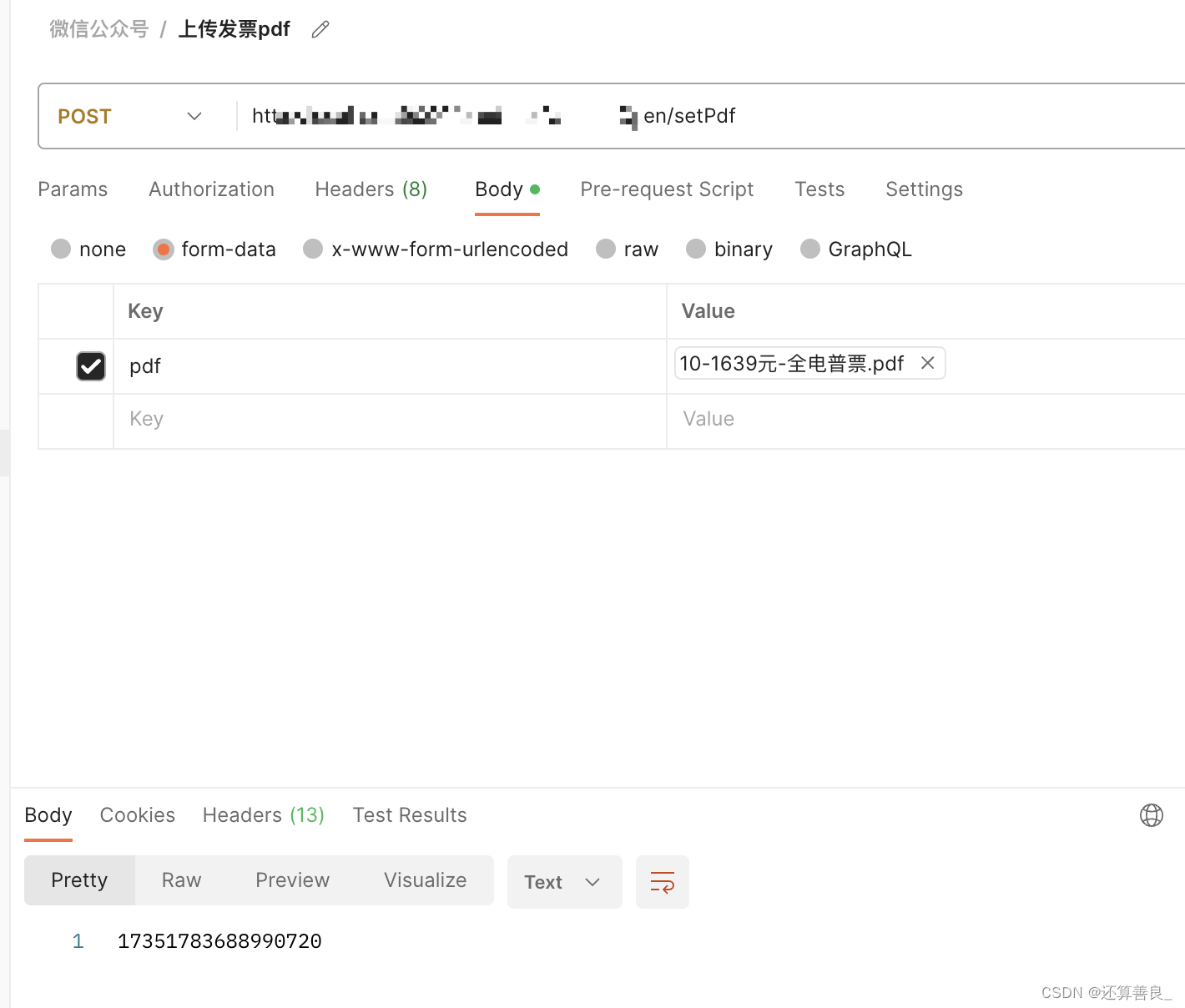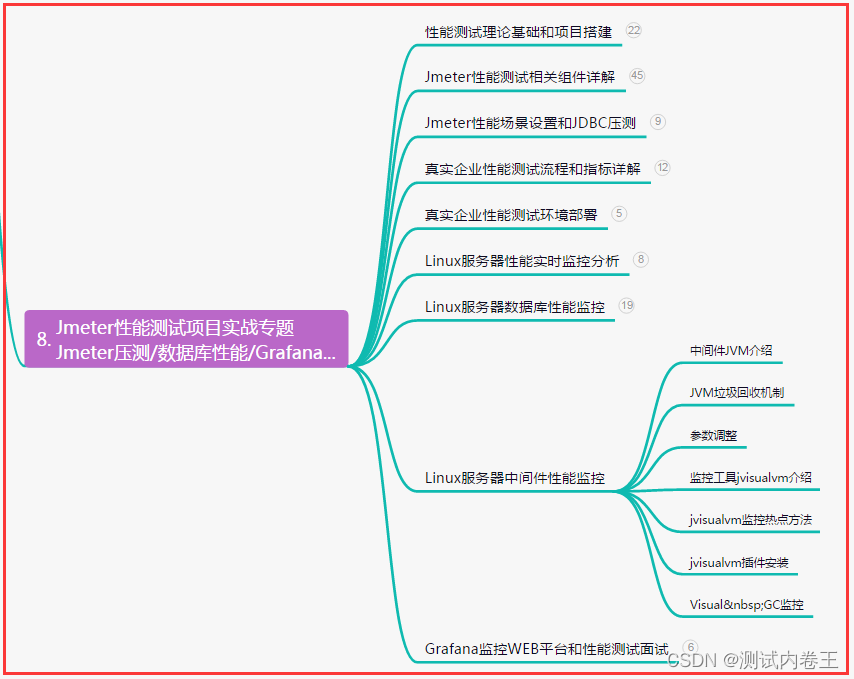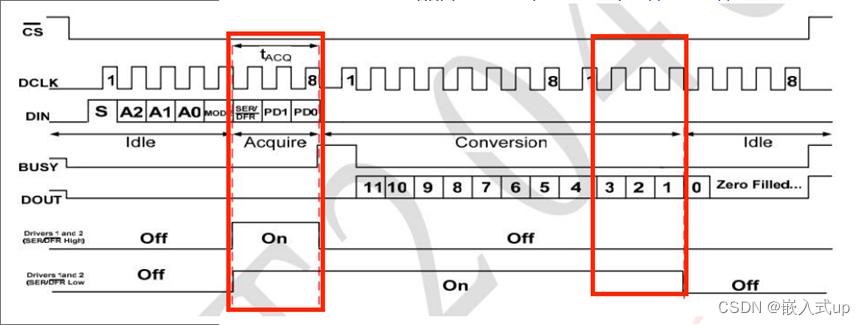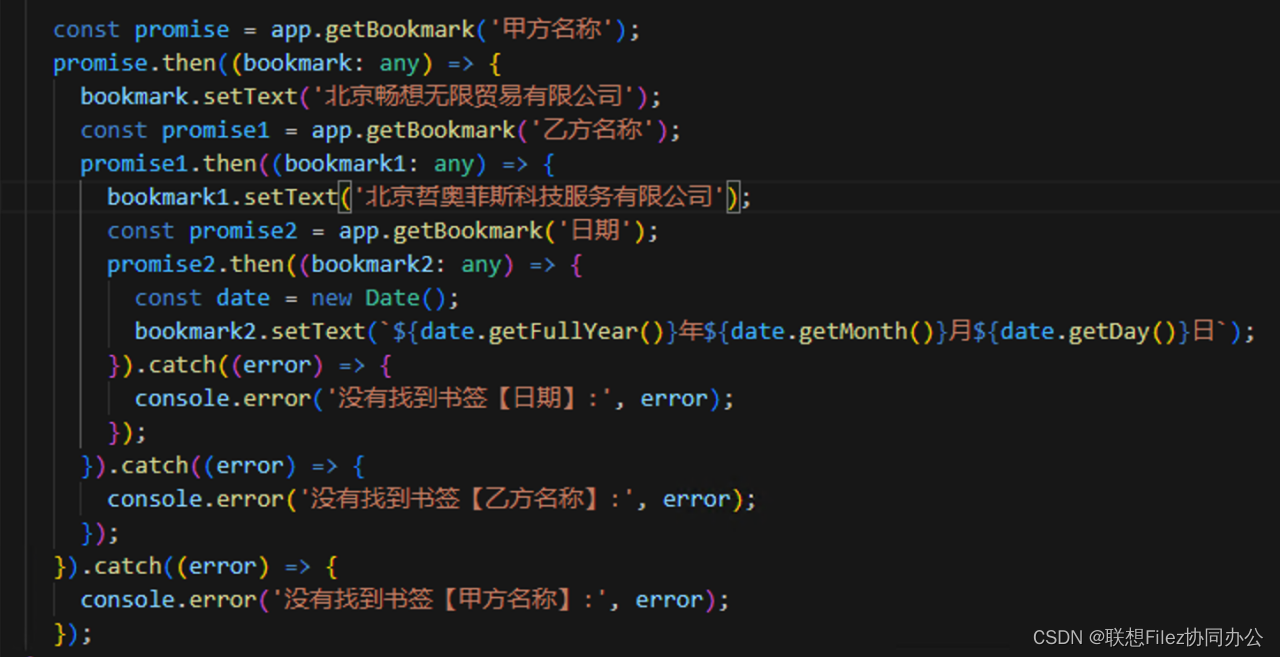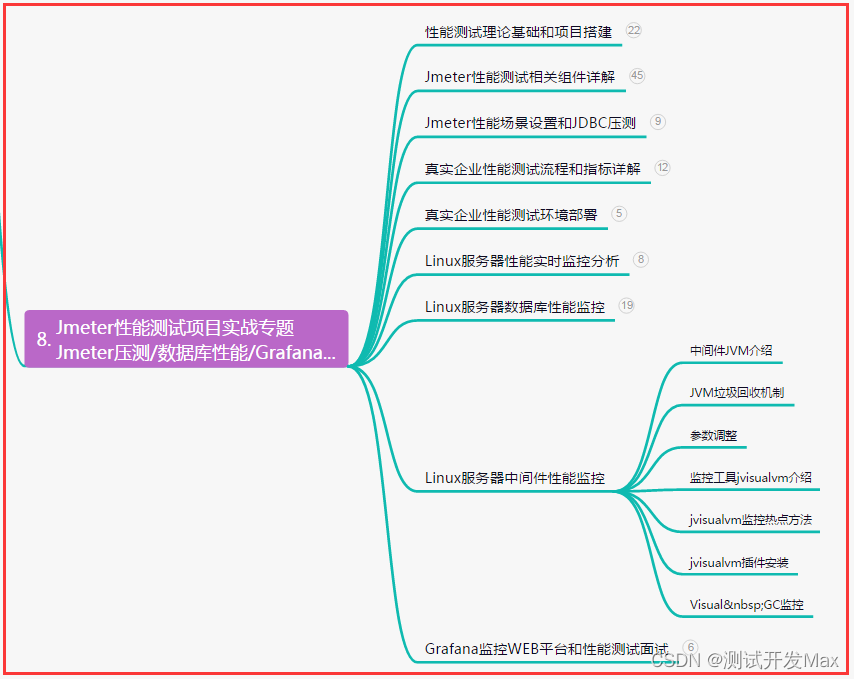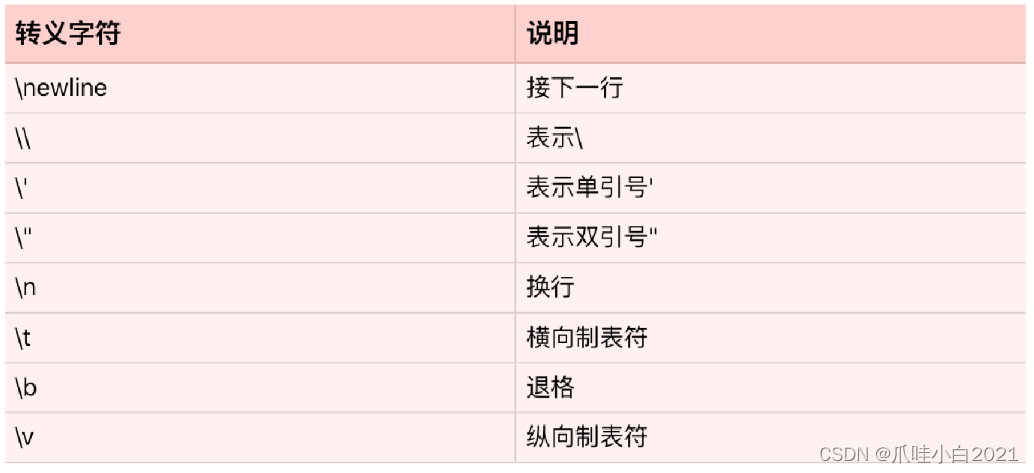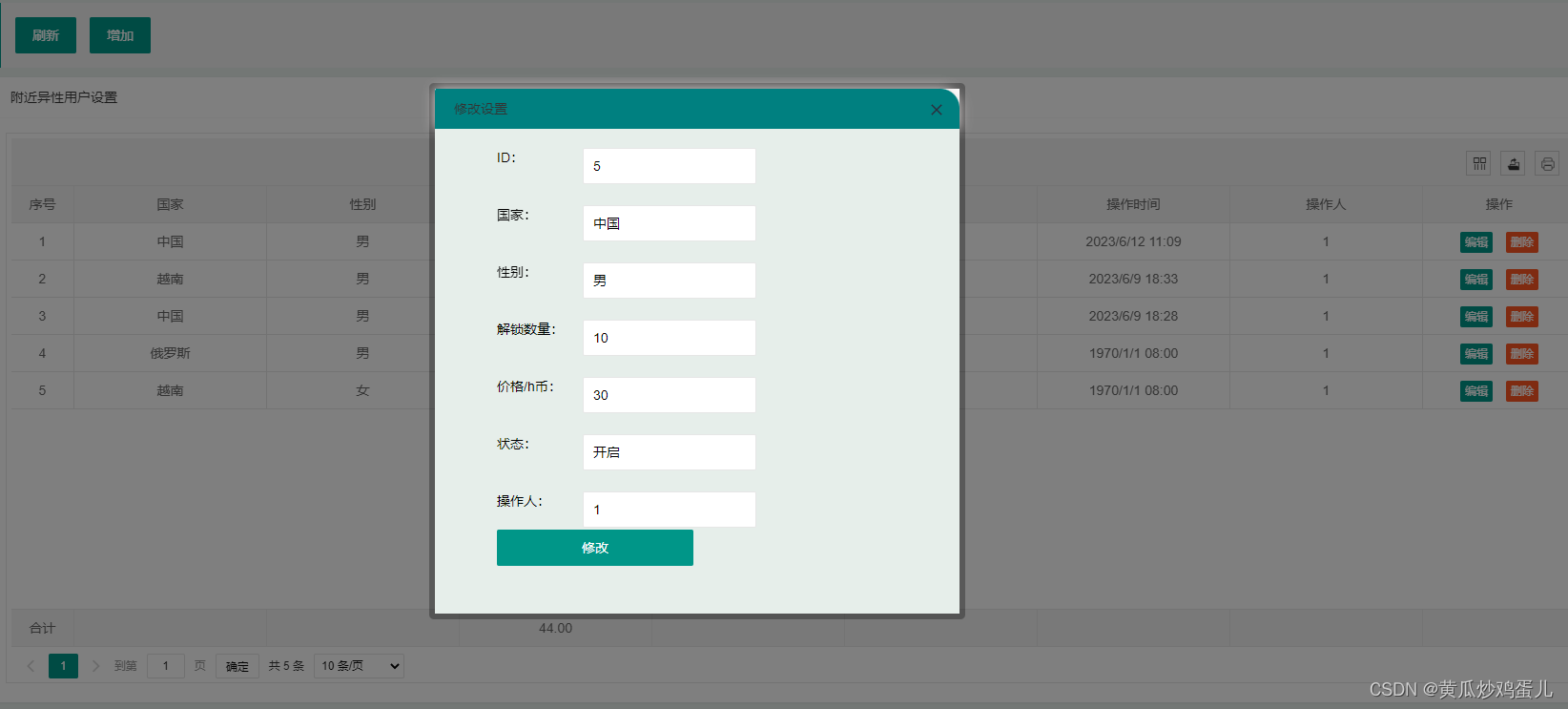4、类和对象
C++面向对象的三大特性为:封装、继承、多态
C++认为万事万物都皆为对象,对象上有其属性和行为
例如:
人可以作为对象,属性有姓名、年龄、身高、体重...,行为有走、跑、跳、吃饭、唱歌...车也可以作为对象,属性有轮胎、方向盘、车灯....行为有载人、放音乐、放空调...
具有相同性质的对象,我们可以抽象称为类,人属于人类,车属于车类
4.1封装
4.1.1 封装的意义
封装是C++面向对象三大特性之一
封装的意义:
(1)将属性和行为作为一个整体,表现生活中的事物。
(2)将属性和行为加以权限控制
封装意义一:在设计类的时候,属性和行为写在一起,表现事物。
语法:class 类名{ 访问权限:属性 / 行为 };
示例1:设计一个圆类,求圆的周长
#include<iostream>
using namespace std;
//设计一个圆类,求圆的周长
//园求周长的公式:2*PI*半径
//1、圆周率
const double PI = 3.14;
//2、class 代表设计一个类,类后面紧跟着的就是类名称
class Circle
{
//访问权限
//公共权限
public:
//属性——通常使用变量
//半径
int m_r;
//行为——通常采用函数
//获取圆的周长
double calculateZC()
{
return 2 * PI * m_r;
}
};
int main()
{
//通过圆类,创建具体的圆(对象)
//实例化 (通过一个类,创建一个对象的过程)
Circle c1;
//给圆对象 的属性进行赋值
c1.m_r = 10;
//2*PI*10=62.8
cout << "圆的周长为:" << c1.calculateZC() << endl;
system("pause");
return 0;
}示例2:设计一个学生类,属性有姓名和学号,可以给姓名和学号赋值,可以显示学生的姓名和学号。
#include<iostream>
using namespace std;
#include<string>
//设计一个学生类,属性有姓名和学号,
//可以给姓名和学号赋值,可以显示学生的姓名和学号
class Student //设置学生类
{
public://公共权限
//类中的属性和行为 我们统一称为 成员
//属性 成员属性 成员变量
//行为 成员函数 成员方法
//属性
string m_Name;//姓名
int m_Id;//学号
//行为
//显示姓名和学好的函数
void showStudent()
{
cout << "姓名:" << m_Name << " 学号:" << m_Id << endl;
}
//给姓名赋值
void setName(string name)
{
m_Name = name;
}
//给学号赋值
void setId(int id)
{
m_Id = id;
}
};
int main()
{
//创建一个具体的学生 实例化对象
Student s1;
//给s1对象 进行属性赋值操作
//s1.m_Name = "张三";
//s1.m_Id = 123456;
s1.setName("张三");
s1.setId(123);
//显示学生信息
s1.showStudent();
system("pause");
return 0;
}封装意义二:
类在设计时,可以把属性和行为放在不同的权限下,加以控制
访问权限有三种:
1. public 公共权限
2. protected 保护权限
3. private 私有权限
#include<iostream>
using namespace std;
#include<string>
//访问权限——三种
//1. public 公共权限——成员 类内可以访问 类外可以访问
//2. protected 保护权限——成员 类内可以访问 类外不可以访问 儿子可以访问父亲中保护的内容,如:汽车
//3. private 私有权限——成员 类内可以访问 类外不可以访问 儿子不可以访问父亲的私有内容,如:银行卡
class Person
{
public://公共权限
string m_Name;//姓名
protected://保护权限
string m_Car;//汽车
private://私有权限
int m_Password;//银行卡密码
public:
void func()
{
m_Name = "张三";
m_Car = "拖拉机";
m_Password = 12345;
}
};
int main()
{
//实例化具体对象
Person p1;
p1.m_Name = "李四";
//p1.m_Car="奔驰";//保护权限内容,在类外访问不到
//p1.m_password=123;//私有权限内容,在类外访问不到
p1.func();
system("pause");
return 0;
}4.1.2 struct和cbss区别
在C++中 struct和class唯一的区别就在于 默认的访问权限不同
区别:
- struct 默认权限为公共
- class 默认权限为私有
#include<iostream>
using namespace std;
class C1
{
int m_A;//默认权限 是私有
};
struct C2
{
int m_A;//默认权限 是公共
};
int main()
{
//struct 和 class 区别
//struct 默认权限是 公共 public
//class 默认权限是 私有 private
C1 c1;
//c1.m_A = 100;//不可访问
C2 c2;
c2.m_A = 100;//可以访问
system("pause");
return 0;
}4.1.3 成员属性设置为私有
优点1: 将所有成员属性设置为私有,可以自己控制读写权限
优点2: 对于写权限,我们可以检测数据的有效性
#include<iostream>
using namespace std;
#include<string>
//成员属性设置为私有
//1、可以自己控制读写权限
//2、对于写可以检测数据的有效性
//设计人类
class Person
{
public:
//设置姓名
void setName(string name)
{
m_Name = name;
}
//获取姓名
string getName()
{
return m_Name;
}
//获取年龄 可写可读 如果想修改(年龄的范围必须是0~150之间)
int getAge()
{
//m_Age = 0;//初始化
return m_Age;
}
//设置年龄
void setAge(int age)
{
if (age < 0 || age>150)
{
cout << "你输出的年龄有误" << endl;
return;
}
m_Age = age;
}
//设置情人 只写
void setLover(string lover)
{
m_Lover = lover;
}
private:
//姓名 可读可写
string m_Name;
//年龄 只读
int m_Age;
//情人 只读
string m_Lover;
};
int main()
{
Person p;
p.setName("张三");
p.setLover("小红");
p.setAge(20);
cout << "姓名:" << p.getName() << endl;
cout << "年龄:" << p.getAge() << endl;
//cout << "年龄:" << p.getlover() << endl;//错误,只写 不能读
system("pause");
return 0;
}练习案例1:设计立方体类
设计立方体类(Cube)
求出立方体的面积和体积
分别用全局函数和成员函数判断两个立方体是否相等

分析:
Class Cube
{
public:
//行为
//设置获取它的长宽高
获取立方体的面积
获取立方体的体积
private:
//属性
m_L
m_W
m_H
}
程序:
#include<iostream>
using namespace std;
//设计立方体的类
//1、创建立方体类
//2、设计属性
//3、设计行为 获取立方体面积和体积
//4、分别利用全局函数和成员函数 判断两个立方体是否相等
class Cube
{
public:
//设置长
void setL(int l)
{
m_L = l;
}
//获取长
int getL()
{
return m_L;
}
//设置宽
void setW(int w)
{
m_W = w;
}
//获取宽
int getW()
{
return m_W;
}
//设置高
void setH(int h)
{
m_H = h;
}
//获取高
int getH()
{
return m_H;
}
//获取立方体面积
int calculateS()
{
return 2 * (m_L * m_W + m_L* m_H + m_W * m_H);
}
//获取立方体体积
int calculateV()
{
return m_L * m_W * m_H;
}
//利用成员函数判断两个立方体是否相等
bool isSameByClass(Cube &c)
{
if (m_L == c.getL() && m_W == c.getW() && m_H == c.getH())
{
return true;
}
return false;
}
private:
int m_L;//长
int m_W;//宽
int m_H;//高
};
//利用全局函数判断 两个立方体是否相等
bool isSame(Cube& c1, Cube& c2)
{
if (c1.getL() == c2.getL() && c1.getW() == c2.getW() && c1.getH() == c2.getH())
{
return true;
}
return false;
}
int main()
{
//创建立方体对象
Cube c1;
c1.setL(10);
c1.setW(10);
c1.setH(10);
cout << "c1的面积:" << c1.calculateS() << endl;
cout << "c1的体积:" << c1.calculateV() << endl;
//创建第二个立方体
Cube c2;
c2.setL(10);
c2.setW(10);
c2.setH(10);
//利用全局函数判断
bool ret = isSame(c1, c2);
if (ret)
{
cout << "全局函数:c1和c2是相等的" << endl;
}
else
{
cout << "全局函数:c1和c2是不相等的" << endl;
}
//成员函数判断
ret = isSame(c1, c2);//不需要使用bool
if (ret)
{
cout << "成员函数判断:c1和c2是相等的" << endl;
}
else
{
cout << "成员函数判断:c1和c2是不相等的" << endl;
}
system("pause");
return 0;
}练习案例2:点和圆关系
设计一个圆形类(Circle),和一个点类(Point),计算点和圆的关系。

分析:点和圆关系的判断:
- 点到圆心的距离 == 半径 点在圆上
- 点到圆心的距离 < 半径 点在园内
- 点到圆心的距离 > 半径 点在园内
点到圆心的距离?
圆心(x1,y1),点(x2,y2)。
(x1-x2)^2 + (y1-y2)^2 和 m_R^2 对比
方法一:一个文件内。
#include<iostream>
using namespace std;
//点和圆的关系案例
//点类
class Point
{
public:
//设置X
void setX(int x)
{
m_X = x;
}
//获取X
int getX()
{
return m_X;
}
//设置Y
void setY(int y)
{
m_Y = y;
}
//获取Y
int getY()
{
return m_Y;
}
private:
int m_X;
int m_Y;
};
//圆类
class Circle
{
public:
//设置半径
void setR(int r)
{
m_R = r;
}
//获取半径
int getR()
{
return m_R;
}
//设置圆心
void setCenter(Point center)
{
m_Center = center;
}
//获取圆心
Point getCenter()
{
return m_Center;
}
private:
Point m_Center;//在类中可以让另一个类 作为本来中的成员
int m_R;
};
//判断点和圆的关系
void isInCircle(Circle &c, Point &p)
{
//计算两点之间距离的 平方
int distance =
(c.getCenter().getX() - p.getX())* (c.getCenter().getX() - p.getX()) +
(c.getCenter().getY() - p.getY()) * (c.getCenter().getY() - p.getY());
//计算半径的平方
int rdistance = c.getR() * c.getR();
//判断关系
if (distance = rdistance)
{
cout << "点在圆上" << endl;
}
else if (distance > rdistance)
{
cout << "点在圆外" << endl;
}
else
{
cout << "点在圆内" << endl;
}
}
int main()
{
//创建圆
Circle c;
c.setR(10);
Point center;
center.setX(10);
center.setY(0);
c.setCenter(center);
//创建点
Point p;
p.setX(10);
p.setY(10);
//判断关系
isInCircle(c, p);
system("pause");
return 0;
}方法二:拆分为多个文件。
1、头文件:
(1)point.h
#pragma once
#include<iostream>
using namespace std;
//点类——保留函数声明与变量声明。
class Point
{
public:
//设置X
void setX(int x);
//获取X
int getX();
//设置Y
void setY(int y);
//获取Y
int getY();
private:
int m_X;
int m_Y;
};(2)circle.h
#pragma once
#include<iostream>
using namespace std;
#include"point.h"
//保留函数声明。
//圆类
class Circle
{
public:
//设置半径
void setR(int r);
//获取半径
int getR();
//设置圆心
void setCenter(Point center);
//获取圆心
Point getCenter();
private:
Point m_Center;//在类中可以让另一个类 作为本来中的成员
int m_R;
};2、Cpp文件
(1)point.cpp
#include"point.h"
//保留函数的实现
//点类
//设置X
void Point::setX(int x)//Point::设置作用域。
{
m_X = x;
}
//获取X
int Point::getX()
{
return m_X;
}
//设置Y
void Point::setY(int y)
{
m_Y = y;
}
//获取Y
int Point::getY()
{
return m_Y;
}(2)circle.cpp
#include"circle.h"
//圆类——保留程序实现。
//设置半径
void Circle::setR(int r)
{
m_R = r;
}
//获取半径
int Circle::getR()
{
return m_R;
}
//设置圆心
void Circle::setCenter(Point center)
{
m_Center = center;
}
//获取圆心
Point Circle::getCenter()
{
return m_Center;
}(3)main主函数
#include<iostream>
using namespace std;
#include"point.h"
#include"circle.h"
//点和圆的关系案例
//判断点和圆的关系——全局变量。
void isInCircle(Circle& c, Point& p)
{
//计算两点之间距离的 平方
int distance =
(c.getCenter().getX() - p.getX()) * (c.getCenter().getX() - p.getX()) +
(c.getCenter().getY() - p.getY()) * (c.getCenter().getY() - p.getY());
//计算半径的平方
int rdistance = c.getR() * c.getR();
//判断关系
if (distance = rdistance)
{
cout << "点在圆上" << endl;
}
else if (distance > rdistance)
{
cout << "点在圆外" << endl;
}
else
{
cout << "点在圆内" << endl;
}
}
int main()
{
//创建圆
Circle c;
c.setR(10);
Point center;
center.setX(10);
center.setY(0);
c.setCenter(center);
//创建点
Point p;
p.setX(10);
p.setY(10);
//判断关系
isInCircle(c, p);
system("pause");
return 0;
}4.2对象的初始化和清理
- 生活中我们买的电子产品都基本会有出厂设置,在某一天我们不用时候也会删除一些自己信息数据保证安全。
- C++中的面向对象来源于生活,每个对象也都会有初始设置以及 对象销毁前的清理数据的设置。
4.2.1 构造函数和析构函数
对象的初始化和清理也是两个非常重要的安全问题
一个对象或者变量没有初始状态,对其使用后果是未知
同样的使用完一个对象或变量,没有及时清理,也会造成一定的安全问题
C++利用了构造函数和析构函数解决上述问题,这两个函数将会被编译器自动调用,完成对象初始化和清理工作。
对象的初始化和清理工作是编译器强制要我们做的事情,因此如果我们不提供构造和析构,编译器会提供编译器提供的构造函数和析构函数是空实现。
- 构造函数:主要作用在于创建对象时为对象的成员属性赋值,构造函数由编译器自动调用,无须手动调用。
- 析构函数:主要作用在于对象销毁前系统自动调用,执行一些清理工作。
构造函数语法:类名( ) { }
1.构造函数,没有返回值也不写void
2.函数名称与类名相同
3.构造函数可以有参数,因此可以发生重载
4.程序在调用对象时候会自动调用构造,无须手动调用,而且只会调用一次
析构函数语法:类名( ) { }
1.析构函数,没有返回值也不写void
2.函数名称与类名相同,在名称前加上符号 ~
3.析构函数不可以有参数,因此不可以发生重载
4.程序在对象销毁前会自动调用析构,无须手动调用,而且只会调用一次
#include<iostream>
using namespace std;
//对象的初始化和清理
//1、构造函数 进行初始化的操作
class Person
{
public:
//1、构造函数
//没有返回值 不用写void
//构造函数可以有参数,可以发生重载
//创建对象的时候,构造函数会自动调用,而且只调用一次
Person()
{
cout << "Person构造函数的调用" << endl;
}
//2、析构函数 进行清理的操作
//没有返回值 不用写void
//函数名和类名相同 在名称前加 ~
//析构函数不可以有参数的,不可以发生重载
//对象在销毁前 会自动的调用析构函数,而且只会调用一次
~Person()
{
cout << "Person析构函数的调用" << endl;
}
};
//构造和析构函数都是必须有的实现,如果我们自己不提供,编译器提供一个空间的构造和析构。
void test01()
{
Person p;//在栈上的数据,tset01执行完毕后,释放这个对象
}
int mian()
{
test01();
system("pause");
return 0;
}4.2.2 构造函数的分类及调用
两种分类方式
按参数分为: 有参构造和无参构造
按类型分为: 普通构造和拷贝构造
三种调用方式
括号法
显示法
隐式转换法
#include<iostream>
using namespace std;
//构造函数的分类与调用
//分类
//按照参数分类 无参构造(默认构造) 和 有参构造
//按照类型分类 普通构造 拷贝构造
class Person
{
public:
//构造函数
Person()//构造函数——初始化
{
cout << "Person的无参构造函数调用" << endl;
}
Person(int a)
{
age = a;
cout << "Person的有参构造函数调用" << endl;
}
//拷贝构造函数
Person(const Person &p)//引用
{
//将传入的人身上的所有属性,拷贝到我身上。
age = p.age;
}
~Person()//析构函数——清除
{
cout << "Person的析构函数调用" << endl;
}
//private:
int age;
};
//调用
void test01()
{
//1、括号法
//Person p1;//默认构造函数调用
//Person p2(10);//有参构造函数
//Person p3(p2);//拷贝构造函数
//cout << "p2的年龄:" << p2.age << endl;
//cout << "p3的年龄:" << p3.age << endl;
//注意事项1
//调用默认构造函数时候,不要加()
//因为下面这行代码,编译器会认为是一个函数声明,不会认为在创建对象。
//Person p1();
//void func();
//2、显示法
//Person p1;//默认构造函数调用
//Person p2 = Person(10);//有参构造
//Person p3 = Person(p2);//拷贝构造
//Person(10);//匿名对象 特点:当前行执行结束后,系统会立即回收掉匿名对象。
//cout << "aaaa" << endl;
//注意事项2
//不要利用拷贝构造函数 初始化匿名对象 编译器会认为 Person(p3)==Person p3;对象声明。
//如:Person(p3);
//3、隐式转换法
Person p4 = (10);//相当于 写了 Person p4 = Person(10); 有参构造调用
Person p5= p4;//拷贝构造
}
int main()
{
test01();
system("pause");
return 0;
}4.2.3 拷贝构造函数调用时机
C++中拷贝构造函数调用时机通常有三种情况
- 使用一个已经创建完毕的对象来初始化一个新对象。
- 值传递的方式给函数参数传值
- 以值方式返回局部对象
#include<iostream>
using namespace std;
//拷贝构造函数的调用时机
class Person
{
public:
Person();
Person(int age);
Person(const Person& p);
~Person();
//private:
int m_Age;
};
Person::Person()
{
cout << "Person默认构造函数调用" << endl;
}
Person::Person(int age)
{
cout << "Person有参构造函数调用" << endl;
m_Age = age;
}
Person::Person(const Person &p)
{
cout << "Person拷贝构造函数调用" << endl;
m_Age = p.m_Age;
}
Person::~Person()
{
cout << "Person析构函数调用" << endl;
}
//1、使用一个已经创建完毕的对象来初始化一个新的对象
void test01()
{
Person p1(20);
Person p2(p1);
cout << "p2的年龄为:" << p2.m_Age << endl;
}
//2、值传递的方式给函数参数传值
void doWork(Person p)
{
}
void test02()
{
Person p;
doWork(p);
}
//3、值方式返回局部对象
Person doWork2()
{
Person p1;
cout << (int*)&p1 << endl;
return p1;
}
void test03()
{
Person p = doWork2();
cout << (int*)&p << endl;
}
int main()
{
//test01();
//test02();
test03();
system("pause");
return 0;
}4.2.4 构造函数调用规则
默认情况下,c++编译器至少给一个类添加3个函数
1.默认构造函数(无参,函数体为空)
2.默认析构函数(无参,函数体为空)
3.默认拷贝构造函数,对属性进行值拷贝
构造函数调用规则如下
- 如果用户定义有参构造函数,c++不在提供默认无参构造,但是
- 如果用户定义拷贝构造函数,c++不会再提供其他构造函数
#include<iostream>
using namespace std;
//构造函数的调用规则
//1、创建一个类,C++编译器会给每个类添加至少3个函数。
//默认构造(空实现)
//构造函数(空实现)
//拷贝构造(值拷贝)
//2、如果我们写了有参构造函数,编译器就不再提供默认构造,依然提供拷贝构造。
//如果我们写了拷贝构造函数,编译器就不再提供其他的普通构造函数了。
class Person
{
public:
Person();
Person(int age);
Person(const Person& p);
~Person();
int m_Age;
private:
};
Person::Person()
{
cout << "Person的默认构造函数调用" << endl;
}
Person::Person(int age)
{
m_Age = age;
cout << "Person的有参构造函数调用" << endl;
}
Person::Person(const Person &p)
{
m_Age = p.m_Age;
cout << "Person的拷贝构造函数调用" << endl;
}
Person::~Person()
{
cout << "Person的析构函数调用" << endl;
}
void test01()
{
Person p;
p.m_Age = 18;
Person p2(p);
cout << "p2的年龄:"<<p.m_Age << endl;
}
void test02()
{
Person p;
}
int main()
{
//test01();
test02();
system("pause");
return 0;
}4.2.5 深拷贝与浅拷贝
深浅拷贝是面试经典问题,也是常见的一个坑
浅拷贝: 简单的赋值拷贝操作
深拷贝: 在堆区重新申请空间,进行拷贝操作
#include<iostream>
using namespace std;
//深拷贝和浅拷贝
//浅拷贝带来的问题就是堆区的内存重复释放。
//浅拷贝的问题 要利用深拷贝进行解决。
class Person
{
public:
Person();
Person(int age,int height);
Person(const Person &p);
~Person();
int m_Age;//年龄
int *m_Height;//身高
private:
};
Person::Person()
{
cout << "Person的默认构造函数调用" << endl;
}
Person::Person(int age,int height)
{
m_Age = age;
m_Height = new int(height);
cout << "Person的有参构造函数调用" << endl;
}
//自己实现拷贝构造函数 解决浅拷贝带来的问题。
Person::Person(const Person &p)
{
cout << "Person的拷贝构造函数调用" << endl;
m_Age = p.m_Age;
//m_Height = p.m_Height;//编译器默认实现就是这行代码。
//深拷贝操作
m_Height = new int(*p.m_Height);//深拷贝,重新在堆区创建一块内存。
}
Person::~Person()
{//析构代码,将堆区开辟的数据做释放操作。
if (m_Height != NULL)//空
{
delete m_Height;
m_Height = NULL;
}
cout << "Person的析构函数调用" << endl;
}
void test01()
{
Person p1(18,160);
cout << "p1的年龄:" << p1.m_Age << "身高为:" << *p1.m_Height<< endl;
Person p2(p1);
cout << "p2的年龄:" << p2.m_Age << "身高为:" << *p2.m_Height << endl;
}
int main()
{
test01();
system("pause");
return 0;
}总结:如果属性在堆区开辟的,一定要自己提供拷贝构造函数,防止浅拷贝带来的问题。
4.2.6初始化列表
C++提供了初始化列表语法,用来初始化属性。
语法:构造函数():属性1(值1),属性2(值2)………{}
#include<iostream>
using namespace std;
//初始化列表
class Person
{
public:
//传统初始化操作
/*Person(int a, int b, int c)
{
m_A = a;
m_B = b;
m_C = c;
}*/
//语法:构造函数():属性1(值1),属性2(值2)………{}
//初始化列表 初始化属性
Person(int a,int b,int c):m_A(a), m_B(b), m_C(c)
{
}
int m_A;
int m_B;
int m_C;
private:
};
void test01()
{
//Person p(10,20,30);
Person p(30,20,10);
cout << "m_A =" << p.m_A << endl;
cout << "m_B =" << p.m_B << endl;
cout << "m_C =" << p.m_C << endl;
}
int main()
{
test01();
system("pause");
return 0;
}4.2.7类对象作为成员
C++类中的成员可以是另一个类的对象,我们称该成员为 对象成员
例如:
class A { }
class B
{
A a;
}
B类中有对象A作为成员,A为对象成员。
那么当创建B对象时,A与B的构造和析构的顺序是谁先谁后?
示例:
#include<iostream>
using namespace std;
#include<string>
//类对象作为类成员
//手机类
class Phone
{
public:
Phone(string pname)
{
cout << "Phone的构造函数调用" << endl;
m_PName = pname;
}
~Phone()
{
cout << "Phone的析构函数调用" << endl;
}
//手机品牌的名称
string m_PName;
};
//人类
class Person
{
public:
//Phone m_Phone = pname;//隐士转换法。
Person(string name,string pname):m_Name(name),m_Phone(pname)//初始化列表 初始化属性
{
cout << "Person的构造函数调用" << endl;
}
~Person()
{
cout << "Person的析构函数调用" << endl;
}
//姓名
string m_Name;
//手机
Phone m_Phone;
};
//当其他类对象作为本类成员,构造时候先构造类对象,再构造自身,析构的顺序呢?
//析构的顺序与构造相反。
void test01()
{
Person p("张三","苹果MAX");
cout << p.m_Name << "拿着:"<<p.m_Phone.m_PName<<endl;
}
int main()
{
test01();
system("pause");
return 0;
}4.2.8 静态成员
静态成员就是在成员变量和成员函数前加上关键字static ,称为静态成员。
静态成员分为:
静态成员变量
- 所有对象共享同一份数据
- 在编译阶段分配内存
- 类内声明,类外初始化
静态成员函数
- 所有对象共享同一个函数
- 静态成员函数只能访问静态成员变量
#include<iostream>
using namespace std;
//静态成员变量
class Person
{
public:
//1、所有对象都共享同一份数据
//2、编译阶段就分配内存
//3、类内声明,类外初始化操作
static int m_A;
//静态成员变量也是有访问权限的
private:
static int m_B;
};
int Person::m_A = 100;//类外初始化操作
int Person::m_B = 200;
void test01()
{
Person p;
cout << p.m_A << endl;//100
Person p2;
p2.m_A = 200;
cout << p.m_A << endl;//200
}
void test02()
{
//静态成员变量 不属于某个对象上,所有对象都共享同一份
//因此静态成员变量有两种访问方式
//1、通过对象进行访问
Person p;
cout << p.m_A << endl;
//2、通过类名进行访问
cout << Person::m_A << endl;
//cout << Person::m_B << endl;//类外访问不能私有静态成员变量。
}
int main()
{
//test01();
test02();
system("pause");
return 0;
}
#include<iostream>
using namespace std;
//静态成员函数
//所有对象共享同一个函数
//静态成员函数只能访问静态变量成员变量
class Person
{
public:
//静态成员函数
static void func()
{
m_A = 100;//静态成员函数可以访问 静态成员变量。
//m_B=200;//静态成员函数 不可访问 非静态成员变量,无法区分到底是哪个对象的m_B属性。
cout << "static void func调用" << endl;
}
static int m_A;//静态成员变量//类内声明。
int m_B;//非静态成员变量
private:
//静态成员函数也是有访问权限的。
static void func2()
{
cout << "static void func2调用" << endl;
}
};
int Person::m_A;//类外初始化
void test01()
{
//1、通过对象访问
Person p;
p.func();
//2、通过类名访问
Person::func();
//Person::func2();//类外访问不到私有静态成员函数。
}
int main()
{
test01();
system("pause");
return 0;
}4.3 C++对象模型和this指针
4.3.1成员变量和成员函数分开存储
在C++中,类内的成员变量和成员函数分开存储
只有非静态成员变量才属于类的对象上
#include<iostream>
using namespace std;
//成员变量 和 成员函数 分开存储
class Person
{
public:
int m_A;//非静态成员变量。4 字节。属于类的对象上。
static int m_B;//静态成员变量,类内声明。不属于类的对象上。
void func() {}//非静态成员函数 不属于类的对象。
static void func2() {}//静态成员函数 不属于类的对象上。
private:
};
int Person::m_B = 0;//类外初始化
void test01()
{
Person p;
//空对象占用的空间内存为:1 字节。
//C++编译器会给每个空对象也分配一个字节空间,是为了区分空对象占用内存的位置。
//每个空对象也应该有一个独一无二的内存地址。
cout<<"size of p = " <<sizeof(p)<< endl;
}
int main()
{
test01();
system("pause");
return 0;
}4.3.2 this指针概念
通过4.3.1我们知道在C++中成员变量和成员函数是分开存储的
每一个非静态成员函数只会诞生一份函数实例,也就是说多个同类型的对象会共用一块代码
那么问题是:这一块代码是如何区分那个对象调用自己的呢?
C++通过提供特殊的对象指针,this指针,解决上述问题。this指针指向被调用的成员函数所属对象。
this指针是隐含每一个非静态成员函数内的一种指针
this指针不需要定义,直接使用即可
this指针的用途
- 当形参和成员变量同名时,可用this指针来区分
2. 在类的非静态成员函数中返回对象本身,可使用return *this
#include<iostream>
using namespace std;
class Person
{
public:
Person(int age)
{//this指针指向被调用的成员函数所属对象。
this->age = age;//this 指向 p1
}
//链式编程思想。
Person& PersonAddAge(Person &p)//使用Person的引用。
{
this->age += p.age;
return *this;//this 指向p2的指针,而*this指向的就是p2这个对象本体。
}
int age;
private:
};
//1、解决名称冲突
void test01()
{
Person p1(18);
cout << "Person p1的年龄"<<p1.age << endl;
}
//2、返回对象本身用 return *this
void test02()
{
Person p1(10);
Person p2(10);
p2.PersonAddAge(p1);
cout << "p2 的年龄" << p2.age << endl;
}
int main()
{
test01();
test02();
system("pause");
return 0;
}4.3.3 空指针访问成员函数
C++中空指针也是可以调用成员函数的,但是也要注意有没有用到this指针
如果用到this指针,需要加以判断保证代码的健壮性
#include<iostream>
using namespace std;
//空指针调用成员函数
class Person
{
public:
void showClassName()
{
cout << "this is Person class" << endl;
}
void showPersonAge()
{//报错原因是因为传入的指针是为NULL。
if (this == NULL)
{
return;
}
cout << "age = "<<this->m_Age << endl;
}
int m_Age;
private:
};
void test01()
{
Person * p = NULL;//空指针。
p -> showClassName();
p -> showPersonAge();
//cout << "xxxxx" << endl;
}
int main()
{
test01();
system("pause");
return 0;
}4.3.4 const修饰成员函数
常函数:
- 成员函数后加const后我们称为这个函数为常函数
- 常函数内不可以修改成员属性
- 成员属性声明时加关键字mutable后,在常函数中依
常对象:
- 声明对象前加const称该对象为常对象
- 常对象只能调用常函数
#include<iostream>
using namespace std;
//常函数
class Person
{
public:
//this 指针的本质 是指针常量 指针的指向是不可修改的
//const Person * const this;
//在成员函数后面const,修饰的是this指针,让指针指向的值也不可以修改。
void showPerson() const
{
this->m_B = 100;
//this->m_A = 100;
//this = NULL;//this指针不可以修改指针的指向的
}
void func()
{
//m_A = 100;//可以修改属性。
}
int m_A;
mutable int m_B;//特殊变量,即使在常函数中,也可以修改这个值。
private:
};
//1、常函数
void test01()
{
Person p;//创建对象
p.showPerson();//调用
cout << "xxxxx" << endl;
}
//2、常对象
void test02()
{
const Person p;//在对象前加const,变为常对象
//p.m_A = 100;//不可修改
p.m_B = 100;//m_B是特殊值,在常对象下也可以修改
//常对象只能调用常函数
p.showPerson();
//p.func();//常对象 不可以调用普通成员函数,因为普通成员函数可以修改属性
cout << "xxxxx" << endl;
}
int main()
{
test01();
test02();
system("pause");
return 0;
}4.4友元
生活中你的家有客厅(Public),有你的卧室(Privaie)
客厅所有来的客人都可以进去,但是你的卧室是私有的,也就是说只有你能进去
但是呢,你也可以允许你的好闺蜜好基友进去
在程序里,有些私有属性 也想让类外特殊的一些函数或者类进行访问,就需要用到友元的技术
友元的目的就是让一个函数或者类 访问另一个类中私有成员
友元的关键字为friend
友元的三种实现
- 全局函数做友元
- 类做友元
- 成员函数做友元
(1)全局函数做友元
#include<iostream>
using namespace std;
#include<string>
//全局函数做友元
//建筑物的类
class Building
{
//goodGay全局函数是Building好朋友,可以访问Building中私有的成员。
friend void goodGay(Building* building);//友元 函数声明。
public:
Building()
{
m_SittingRoom = "客厅";
m_BedRoom = "卧室";
}
public:
string m_SittingRoom;//客厅
private:
string m_BedRoom;//卧室
};
//全局函数
void goodGay(Building *building)//使用指针或者引用传值,均可。
{
cout << "好基友全局函数 正在访问:"<< building->m_SittingRoom << endl;
cout << "好基友全局函数 正在访问:" << building->m_BedRoom << endl;
}
void test01()
{
Building building;//创建对象。
goodGay(&building);//传值。
}
int main()
{
test01();
system("pause");
return 0;
}(2)类做友元friend class GoodGay;
#include<iostream>
using namespace std;
#include<string>
//类做友元
class Building;
class GoodGay
{
public:
GoodGay();
void visit();//参观函数 访问Building中的属性
Building * building;
private:
};
class Building
{
//GoodGay类是本来的好朋友,可以访问本类中私有成员。
friend class GoodGay;
public:
Building();
public:
string m_SittingRoom;//客厅
private:
string m_BedRoom;//卧室
};
//类外
Building::Building()
{
m_SittingRoom = "客厅";
m_BedRoom = "卧室";
}
GoodGay::GoodGay()
{
//创建建筑物的对象
building = new Building;//在堆区创建一个对象
}
void GoodGay::visit()
{
cout << "好基友正在访问:" << building->m_SittingRoom << endl;
cout << "好基友正在访问:" << building->m_BedRoom << endl;
}
void test01()
{
GoodGay gg;//创建对象
gg.visit();
}
int main()
{
test01();
system("pause");
return 0;
}(3)成员函数做友元friend void GoodGay::visit();
注释://告诉编译器 GoodGay类下的visit成员函数作为本类的好朋友,可以访问私有成员。
#include<iostream>
using namespace std;
#include<string>
//成员函数做友元
class Building;//类——声明。
class GoodGay
{
public:
GoodGay();
void visit();//让visit函数 可以访问 Building 中私有成员
void visit2();//让visit函数 不可以访问 Building 中私有成员
Building * building;
~GoodGay();
private:
};
//Building 类
class Building
{
//告诉编译器 GoodGay类下的visit成员函数作为本类的好朋友,可以访问私有成员。
friend void GoodGay::visit();
public:
string m_SittingRoom;//客厅
Building();
~Building();
private:
string m_BedRoom;//卧室
};
//类外
GoodGay::GoodGay()
{
building = new Building;
}
GoodGay::~GoodGay()
{
}
//类外实现成员函数
Building::Building()
{
m_SittingRoom = "客厅";
m_BedRoom = "卧室";
}
Building::~Building()
{
}
void GoodGay::visit()
{
cout << "visit 函数正在访问:" << building->m_SittingRoom << endl;
cout << "visit 函数正在访问:" << building->m_BedRoom << endl;
}
void GoodGay::visit2()
{
cout << "visit2 函数正在访问:" << building->m_SittingRoom << endl;
//cout << "visit2 函数正在访问:" << building->m_BedRoom << endl;
}
void test01()
{
GoodGay gg;
gg.visit();
gg.visit2();
}
int main()
{
test01();
system("pause");
return 0;
}4.5 运算符重载
运算符重载概念:对已有的运算符重新进行定义,赋予其另一种功能,以适应不同的数据类型
4.5.1加号运算符重载
作用:实现两个自定义数据类型相加的运算

#include<iostream>
using namespace std;
//加号运算符重载
class Person
{
public:
//1、成员函数重载 +号
Person operator+(Person &p)
{
Person temp;
temp.m_A = this->m_A + p.m_A;
temp.m_B = this->m_B + p.m_B;
return temp;
}
int m_A;
int m_B;
private:
};
// 2、全局函数重载加号
//Person operator+(Person &p1, Person &p2)
//{
// Person temp;
// temp.m_A = p1.m_A + p2.m_A;
// temp.m_B = p1.m_B + p2.m_B;
// return temp;
//}
//3、函数重载的版本
Person operator+(Person& p1, int num)
{
Person temp;
temp.m_A = p1.m_A + num;
temp.m_B = p1.m_B + num;
return temp;
}
void test01()
{
Person p1;
p1.m_A = 10;
p1.m_B = 10;
Person p2;
p2.m_A = 10;
p2.m_B = 10;
//Person p3 = p1.operator+(p2);//成员函数重载本质的调用
//Person p3 = p1.operator+(p1,p2);//全局函数重载本质的调用
Person p3 = p1 + p2;
//运算符重载 也可以发生函数重载
Person p4 = p1 + 100;//Person + int
cout << "p3.m_A = " << p3.m_A << endl;
cout << "p3.m_B = " << p3.m_B << endl;
cout << "p4.m_A = " << p4.m_A << endl;
cout << "p4.m_B = " << p4.m_B << endl;
}
int main()
{
test01();
system("pause");
return 0;
}总结1:对于内置的数据类型的表达式的运算符是不可能改变的
总结2:不要滥用运算符重载
4.5.2 左移运算符重载
作用:可以输出自定义数据类型
#include<iostream>
using namespace std;
//左移运算符重载
class Person
{
friend ostream& operator<<(ostream& out, Person& p);//友元
public:
//利用成员函数重载 左移运算符 p.operator(cout) 简化版本 p<<cout
//不会利用成员函数重载<<运算符,因为无法实现 cout在左侧
//void operator<<(Person &p)
//{
//}
Person(int a, int b)
{
m_A = a;
m_B = b;
}
private:
int m_A;
int m_B;
};
//只能利用全局函数重载左移运算符。//ostream 输出流
ostream & operator<<(ostream &out, Person &p) //本质 operator<<(cout, p) 简化 cout << p
{
out << "m_A =" << p.m_A << " m_B ="<< p.m_B ;
return out;
}
void test01()
{
Person p(10,10);//创建对象。
cout << p <<" hello world" << endl;
//cout << "p.m_A" <<p.m_A<< endl;
}
int main()
{
test01();
system("pause");
return 0;
}4.5.3 递增运算符重载 ++
作用: 通过重载递增运算符,实现自己的整型数据

补充:
Int a=10;
Cout<< ++a <<endl; //先加再输出,输出数值为11。
Cout<< a <<endl; //数值为11。
Int a=10;
Cout<< b++ <<endl; //先输出再后加,输出数值为10。
Cout<< b <<endl; //数值为11。
程序:
#include<iostream>
using namespace std;
//重载递增运算符
//自定义整型
class MyInteger
{
friend ostream &operator<<(ostream &out, MyInteger &myint);//友元——访问私有变量。
public:
MyInteger();
~MyInteger();
//重载 前置++ 运算符
MyInteger & operator++()//返回引用是为了一直对一个数据进行操作。
{
m_Num++;//先进行++运算
return *this;//再返回它的自身
}
//重载 后置++ 运算符
//void operator++(int) // int代表占位参数,可以用于区分前置和后置递增。
MyInteger operator++(int)//返回值——函数含有局部参数。
{
//先 记录当时结果
MyInteger temp = *this;//自身
//后 递增
m_Num++;
//最后将记录结果做返回
return temp;
}
private:
int m_Num;//私有变量
};
MyInteger::MyInteger()
{
m_Num = 0;
}
MyInteger::~MyInteger()
{
}
//重载左移运算符
ostream & operator<<(ostream &out, MyInteger &myint) //本质 operator<<(cout, p) 简化 cout << p
{
out << myint.m_Num;
return out;
}
void test01()
{
MyInteger myint;//创建对象。
cout <<++(++myint)<< endl;
cout << myint << endl;
}
void test02()
{
MyInteger myint;//创建对象。
//cout << (myint)++<< endl;
cout << myint << endl;
}
int main()
{
//test01();
test02();
system("pause");
return 0;
}4.5.4 赋值运算符重载
c++编译器至少给一个类添加4个函数
1.默认构造函数(无参,函数体为空)
2.默认析构函数(无参,函数体为空)
3.默认拷贝构造函数,对属性进行值拷贝
4. 赋值运算符 operator=, 对属性进行值拷贝
如果类中有属性指向堆区,做赋值操作时也会出现深浅拷贝问题
#include<iostream>
using namespace std;
//赋值运算符重载
class Person
{
public:
Person(int age)
{
m_Age = new int(age);//堆区
}
int *m_Age;//指针,添加到堆区。
~Person()
{
if (m_Age != NULL)
{
delete m_Age;
m_Age = NULL;
}
}
//重载 赋值运算符
Person& operator=(Person& p)
{
//编译器提供浅拷贝
//m_Age = p.m_Age;
//应该先判断是否有属性在堆区,如果有 先释放干净,然后再深拷贝。
if (m_Age != NULL)
{
delete m_Age;
m_Age = NULL;
}
//深拷贝
m_Age = new int(*p.m_Age);
//返回对象本身
return *this;//指向自身,并返回自身的值。
}
private:
};
void test01()
{
Person p1(18);//创建对象。
Person p2(20);
Person p3(30);
p3 = p2 = p1;//赋值操作。
cout << "p1的年龄为:" << *p1.m_Age << endl;
cout << "p2的年龄为:" << *p2.m_Age << endl;
cout << "p3的年龄为:" << *p3.m_Age << endl;
}
int main()
{
test01();
system("pause");
return 0;
}4.5.5关系运算符重载
作用:重载关系运算符,可以让两个自定义类型对象进行对比操作。
#include<iostream>
using namespace std;
#include<string>
//关系运算符重载
class Person
{
public:
Person(string name, int age)
{
m_Name = name;
m_Age = age;
}
//重载 == 号
bool operator==(Person &p)//真假采用bool进行判断。
{
if (this->m_Name == p.m_Name && this->m_Age == p.m_Age)
{
return true;
}
return false;
}
//重载 != 号
bool operator!=(Person &p)//真假采用bool进行判断。
{
if (this->m_Name == p.m_Name && this->m_Age == p.m_Age)
{
return false;
}
return true;
}
string m_Name;
int m_Age;
private:
};
void test01()
{
Person p1("Tom",18);
Person p2("Tom", 18);
//相等
if (p1 == p2)
{
cout << "p1与p2是相等的" << endl;
}
else
{
cout << "p1与p2是不相等的" << endl;
}
//不等
if (p1 != p2)
{
cout << "p1与p2是不相等的" << endl;
}
else
{
cout << "p1与p2是相等的" << endl;
}
}
int main()
{
test01();
system("pause");
return 0;
}4.5.6函数调用运算符重载
- 函数调用运算符()也可以重载
- 由于重载后使用的方式非常像函数的调用,因此称为仿函数
- 仿函数没有固定写法,非常灵活
#include<iostream>
using namespace std;
#include<string>
//函数调用运算符重载
//打印输出类
class MyPrint
{
public:
//重载函数调用运算符
void operator()(string test)//函数名:operator()
{
cout<< test << endl;
}
private:
};
void MyPrint02(string test)
{
cout << test << endl;
}
void test01()
{
MyPrint myPrint;
myPrint("hello world");//由于使用起来非常类似于函数调用,因此称为仿函数。
MyPrint02("hello world");
}
//仿函数非常灵活,没有固定的写法
class MyAdd
{
public:
int operator()(int num1, int num2)
{
return num1 + num2;
}
private:
};
void test02()
{
MyAdd myadd;
int ret = myadd(100, 100);
cout << "ret = " << ret << endl;
//匿名函数对象
cout << MyAdd()(100,200) << endl;//匿名对象:MyAdd(),第二个括号为重载。
}
int main()
{
test01();
test02();
system("pause");
return 0;
}
